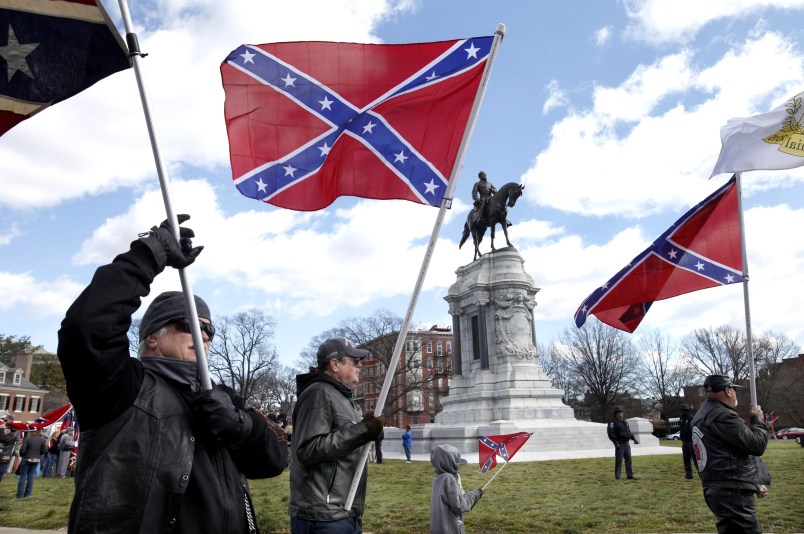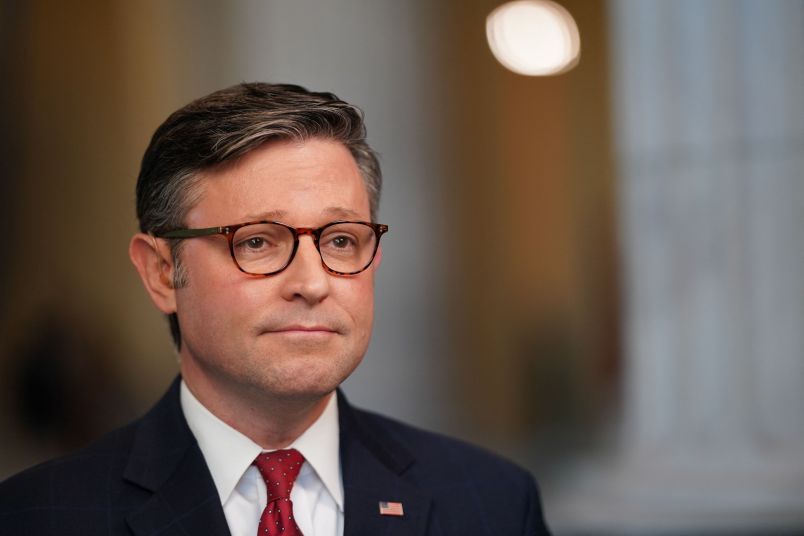I think this is the third post I’ve started with some version of this incredulity. But I still cannot believe the Charleston Massacre has triggered quite this total a collapse of support, not just for flying the Confederate battle flag in places of honor at Southern state capitols, but for public display and honor for the Confederacy and the War of the Rebellion in almost any form. Whatever the precise cause or convergence of under-noticed trends, there now seems like no doubt that we are witnessing a watershed in the country’s long, wretched and denial-ridden wrestling with the public memory of the Civil War.
As a distinct but obviously related point, purely as a matter of incentives, can we get the message out to nutball racists and similar monsters that no, your horrific race massacre will not trigger a race war. We hear this line again and again and I know at some level it’s more a statement than an actual prediction. But no, your mass murder will not trigger a race war. We now sadly have enough examples to have statistically significant data to confirm that your race massacre will not trigger your race war. In fact, I think that Dylann Roof’s attack will likely be remembered, for better or worse, as much for this watershed as for the deaths of the innocents he killed.
But back to our main story.
Just today, Alabama Gov. Robert Bentley (R) quietly ordered the removal of the Confederate flag from the state capitol. Mississippi Sen. Roger Wicker (R), the successor to Trent Lott, whose public career was upended by Confederate nostalgia in 2002, said his state should ditch its current flag (which incorporates the Confederate battle flag) and create an entirely new state flag.
The one that really jumped out at me though was Mitch McConnell coming out to say that Kentucky should remove the statue of Confederate President Jefferson Davis from the state capitol.

Statue of Jefferson Davis overlooks statue of President Abraham Lincoln in Kentucky Capitol Rotunda. Standing in rock and metal for eternity, the shadows of both men are likely saying, WTF?
Let’s review a few things about this. Kentucky was not even part of the Confederacy, though it was a slave state and the Confederacy laid claim to parts of it. Davis is also one of the less objectionable members of the Confederate pantheon. He’s actually just a lackluster figure altogether. One of the reasons for the growth of the cult of Robert E. Lee was that Davis so obviously paled in comparison to Abraham Lincoln that another exemplar of the Southern cause had to be found. Someone like Nathan Bedford Forrest is both a fascinating historical figure and a true monster. So honoring him is a very different thing from honoring Davis.
Now, before getting further, I’m not shedding any tears for Davis disappearing from the pantheon of public honor in Kentucky or anywhere else. Far, far from it. Throughout the almost twenty years I’ve been a working journalist and writer, the valorization of the Confederacy and the Antebellum South has been a recurring focus of my work. And not just because the Confederacy is entirely bound up with white supremacy, which would be more than enough, but because the Confederacy was treason. You’ll note that yesterday I referred to the “pretended Confederate States of America.” This is an intentional and specific usage, one that was sometimes employed by the Union during the war and after, more often in the form of the “so-called Confederate States of America.” The point is simple. Secession is illegal and unconstitutional. The Confederate states never legally left the Union, though the CSA exercised de facto control over much of the South for four years. No foreign governments ever recognized the CSA either.
As I wrote two years ago, the country was stitched back together with a “tacit compromise [which] was the decision to mollify Southern defeat by elevating Southern ‘valor’ above that of the North. It’s no surprise this was done in the South. But in the 1880s and 1890s this was increasingly done in the North as well. A tacit bargain: you lost, we won, and we’re all living in the USA. But we’ll let you win the battle of memory and valor and nostalgia. Both a cause and effect of this national reconciliation was the slackening Northern commitment to protecting the former slaves, now citizens in the South, and their eventual abandonment.” Tony Horwitz explores similar themes far better than I could in this piece he wrote today, which I can’t tell you how proud we were to publish.
As we take stock of the cost the country paid – and especially the freedpeople and their descendants paid – for this act of historical amnesia, we should also remain cognizant of why it was done and what was gained. America could have become a country debilitated by endemic sectional violence and instability. But on balance it was not. Yet the simple fact is that today, men who were unambiguously and proudly guilty of treason hold a place of public honor throughout a large swath of the country. They did so explicitly for the preservation of slavery and their remembrance is extricably tied to the defense of white supremacy after the war.
So all of this is salutary but where does it stop exactly?
Let me note just two examples, in addition to the countless streets, parks, lakes, buildings, and schools that commemorate the Southern rebellion.
The United States Army maintains at least ten military bases – including some of the largest – named in honor of Confederate generals. There is a unique irony in the United States Army, which lost hundreds of thousand of soldiers defeating the Confederacy, naming its biggest military compounds for generals who helped with the killing. I realize that this is a very big can of worms to open. But if it is inappropriate to have a statue of Jefferson Davis in the Kentucky capitol building can it really be appropriate for our largest Army bases to be named after Confederate generals? As of now, the Pentagon says there is “no discussion” of renaming those bases.

The Robert E. Lee Monument on Richmond’s Monument Avenue
Here’s another: Monument Avenue in Richmond. A centerpiece of Richmond, Virginia is the architecturally beautiful, if rather stately and a bit archaic, Monument Avenue, a central boulevard with some of the city’s priciest real estate. It’s lined with monumental statutes of the great worthies of the Confederacy. The main statues are of Robert E. Lee, J.E.B. Stuart, Jefferson Davis, Stonewall Jackson and Matthew Fontaine Maury. In a bizarre if well-intentioned addition, in 1996 the city added a statue of the late tennis great, Arthur Ashe, creating a sort of Frankenstein’s monster of neo-Confederate nostalgia and black achievement. But again, if Jefferson Davis doesn’t belong anywhere in the Kentucky state capitol, does he really belong in a central place of honor in the Virginia capital? Jeb Stuart? Robert E. Lee?
Where does it end?
Again, this isn’t doleful coming from me. None of it should have existed in the first place in my mind. But the ghost of the Confederacy and the almost countless public honors inscribed on the land are close to inoperable. They run so deep. They are so numerous and pervasive.
Do we follow the righteous logic of recent days to its logical conclusion?








